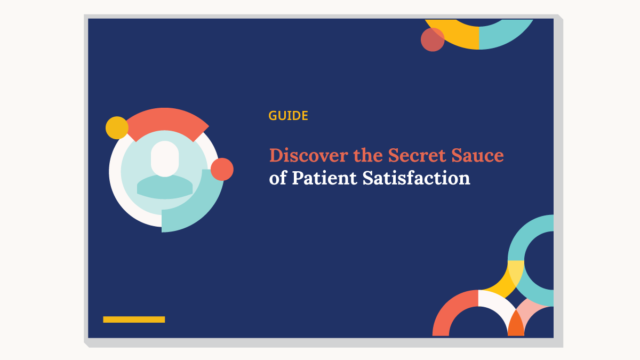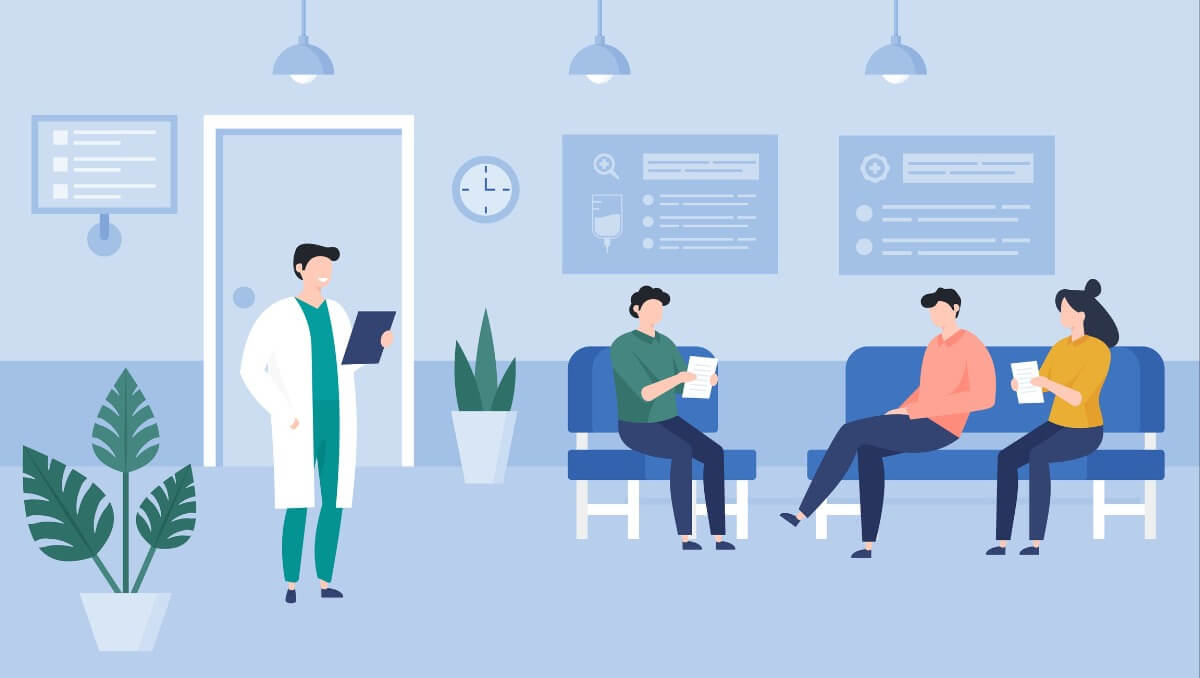We’ve all heard the hair-raising tales (or lived them ourselves) of dumpster fire patient experiences. A patient arrives on time for an appointment and checks in only to sit steaming for 45 minutes until called in to see the doctor. Or a patient gets right in to see the provider and proceeds to wait for what seems like an eternity on one of those super comfy exam room tables.
In either scenario, you’ve got an unhappy patient who may have second thoughts about coming back in the future due to what they believe is either procrastination or poor time management. It not only undermines your patient satisfaction efforts but could ultimately lead to the loss of a returning or new patient. Consider these sobering statistics:
- 68% of patients say the wait times at their practice are unreasonable.
- 30% of patients walked out due to an extended waiting room stay.
- 1 in 5 patients say they’ve switched doctors because of long wait times.
For many practices, a hectic appointment docket that easily gets behind schedule is just a normal workday at the office. But when you’re literally losing patients because of it or earning bad reviews on Google, those inefficiencies really begin to take an unacceptable toll on patient care, retention and revenue.
In this article, we’ll look at some specific tips you can adopt to improve your practice’s schedule and effective time management skills, minimize patient wait times, and deliver a pleasant patient experience that keeps them coming back.
10 Tips to Better Healthcare Practice Time Management
1. Understand how long is too long.
While the fewest minutes patients spend in your waiting room is ideal, the average wait time across specialties for a healthcare professional is about 18 minutes. But 20 minutes is about the maximum amount of time patients are willing to wait before becoming frustrated. That’s a small margin for error. If you’re not sure where you stand in terms of wait time, carefully track your wait times in both the waiting and exam rooms.
2. Communicate clearly.
One of the easiest fixes for long wait times is often overlooked—simply communicate better with your patients. 86% of patients said if they were told in advance about a long wait time that they would feel less frustrated. You can shoot off a quick batch text message to scheduled patients to let them know if you’re running behind schedule before they arrive. When tracking wait times, acknowledge the inconvenience and apologize to patients when the wait goes over 20 minutes. For nearly 70% of patients, showing empathy can help lower frustration levels.
3. Update patients on wait times at check-in
A proven best practice to help patients manage expectations (especially if you’re running behind) is to give arriving patients an estimated wait time at check-in. For example, if their appointment is 20 or 30 minutes out, letting them know may give them the extra minutes they need to make a phone call or complete other tasks while they wait. Patients will appreciate that you’ve kept them in the loop. It also shows that you value their time as much as their own.
4. Use two or three exam rooms
Doctors and other providers can’t work efficiently from a single exam room. They typically need two—preferably three—exam rooms or dentist chairs if they have enough staff to complete pre- and post-visit work. This allows your providers and staff to work more efficiently and effectively while minimizing exam room waits.
5. Build in a buffer time
Block out about an hour each day to accommodate last-minute or same-day appointments and better accommodate a busy schedule. Your practice’s schedulers can check the upcoming week’s schedule for warning signs of a busy day so the team can prioritize building in more buffer time if needed.
6. Schedule follow-up or future maintenance visits at the appointment’s end
This can save significant time and keep the practice running smoothly. Patients don’t need to remember to call the office back to book appointments, and your admin team doesn’t need to call patients to remind them to schedule, which can lead to task overload and burnout. Send automated appointment reminders to make sure they keep that next appointment.
7. Apply patient communications tools to speed up and streamline the appointment workflow
Modern patient communications tools can help you create more efficient appointment processes for both patients and your staff. They can help you reduce office wait times and give patients a quicker and more streamlined care experience.
- Digital intake: Patients can be sent a secure link to fill out intake and insurance forms prior to their visit to simplify, automate and expedite check-in and minimize manual daily tasks for your staff.
- Patient texting and pre-visit instructions: Automatically send patients pre-appointment text message notifications to help them arrive on time and prepare for the visit. These can include wayfinding directions and check-in instructions to reduce wait times.
- Two-way texting: Real-time two-way texting allows your patient to text your office questions prior to the visit to minimize check-in times and get them into their appointment faster.
Key Takeaways
Don’t let long office wait times earn you bad online reviews and scare away your patients. Adopt best practices and patient communications technology that can speed things up, inject greater efficiency into the appointment workflow, and deliver a better patient experience. Every measure you take to ensure your patients have a prompt, hiccup-free appointment helps you strengthen patient-provider relationships, earn their loyalty, and attract more new patients.

To learn more about how you can foster happier, more satisfied patients who will give you glowing reviews on Google, Facebook, or Yelp to boost your acquisition efforts, download the guide, “Discover the Secret Sauce of Patient Satisfaction.”
Read the Guide


